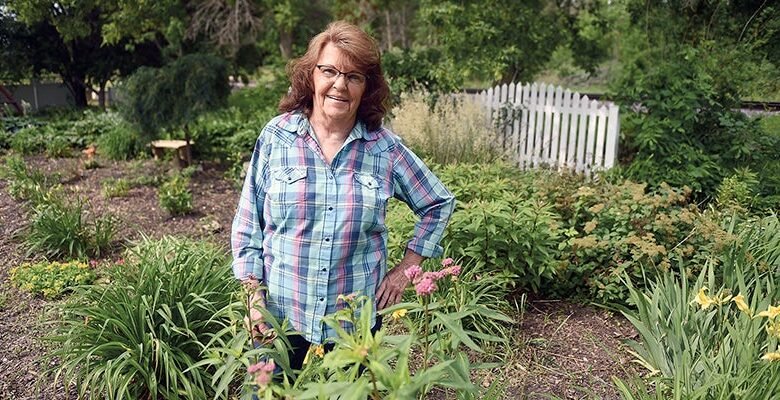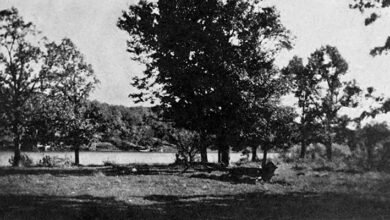
A place of remembrance, hard work, and peace
Published 8:00 am Saturday, July 12, 2025
1 of 7
Lyle Memory Gardens is a place for small town respite
Small towns are built on the backs of those that get the job done. They are built by those who take pride in their community and want each and every little aspect of the town to shine. Without these people, streetlights wouldn’t shine as brightly, parks wouldn’t be as fun, and flowers wouldn’t bloom with vibrant colors. There would be a certain dullness in the town.
But the good news is this: these people are everywhere, and they’re ready to put their best foot forward.
Drive into the town of Lyle and you’ll see one of the town’s most prized areas, the Lyle Memory Gardens.
Years of work and countless hours have been put into the Memory Gardens. It has been a place where avid gardeners have come together to create an environment that is in every way beautiful and tranquil. To some, it’s a place where they can go to enjoy a moment of peace. To others, it’s a place where they go to remember family or friends that have passed on.
To Lyle community members like Betty Fisher, Ann and Paul Walter, Lyle Public Schools teacher James Hansen, and other volunteers, the gardens have been more than just a walk in the park. It has been years of hard work and perseverance.
The Memory Gardens has had its fair share of dedicated volunteers that have worked to keep the gardens alive and vibrant. Fisher has worked in the gardens since 1992.
“Ruth Kuechenmeister asked if I’d come up and help her plant a couple of roses,” Fisher said. “She pulled these roses out of a quart jar — bare root — and I thought ‘What are we going to do with them?’”
Those roses went on to be the first garden Fisher helped plant.
“We planted them behind the caboose. They lasted for years,” she said. “Then from there, every time we turned around, we were planting something else up there, making a new garden.”
In the beginning, Fisher and the others decided it would be a good idea to create a committee for the garden project. The years to come showed a good amount of involvement. Seeing members of the community come together to create something that would soon become a long-lasting feature of the community was nothing short of incredible.
“We had a meeting where about 15 to 17 people showed up,” Fisher said. “I told people all they had to do was bring their own hoe.”
For most new projects, especially ones in small towns, the excitement surrounding them is high. People look forward to spending time with other community members, rolling up their sleeves and putting in an honest day’s work.
Part of the fun that Fisher and the other gardeners experienced while working in the gardens came from thinking of little things they could add to bring the area to life.
After Fisher and Kuechenmeister planted that first rose bed, it was decided that near the entrance of the gardens, they would create landscaping using railroad ties.
“We planted marigolds there for several years,” Fisher said. “That was until we ran into a little problem.”
Seasoned gardeners understand that when you work outside — planting and raising life from the ground up — those cool and shaded areas can be looked at as an invitation to other types of life.
“We found out that snakes like railroad ties,” Fisher added. “I’m not afraid of one, but the ladies wouldn’t go near them. We finally decided to get rid of the railroad ties.”
Eventually, additions were made to the gardens that superseded railroad tie flower beds. The addition of a sidewalk and fencing were two of the largest add-ons the gardens saw.
“The sidewalk was the biggest blessing,” Fisher added.
With a sidewalk that is hugged by flower beds on either side, and a white picket fence that welcomes any visitor upon arrival, these two features bring life to the garden — like how a framed photograph brings life to any bare wall.
After some time of planting flower beds, landscaping, and acquiring historic artifacts as decorative pieces, the ladies that worked in the gardens were approached with ideas from several community members.
“After some time, people would ask if they could plant something in memory of someone,” Fisher said. “That’s when we decided on a name also. We decided to call it the Lye Memory Gardens.”
Today, there are families in Lyle that have adopted entire flower beds in memory of family members.
Ann and Paul Walter are one such family that has stepped up in recent years to help care for the gardens.
“Last year was the first year we decided to have people adopt beds,” Ann said.
Flower bed adoptions came at a time when the community of Lyle was faced with the passing of Diane Trytten, a long-time volunteer at the gardens, as well as Fisher’s good friend and neighbor.
“I started working in the gardens with Betty and Diane before she passed away,” Ann said. “It was after Diane passed away that I told Betty that they can’t expect an 85 and 65 year old to work like this. That’s when we discussed having people adopt beds.”
Trytten, known throughout Lyle as “Ma,” was a true pillar of the community. Fisher said Trytten took pride in many things, like gardening and spending time with her family. She spent countless hours working in her own yard and at the Memory Gardens.
In 2002, Trytten retired from the Hormel plant and immediately went to work in Lyle Public Schools cafeteria and worked there until 2021 until she retired at the age of 83. Trytten also could be found working with her daughter, Robin, and other family members at Lyle Liquor.
“When Diane moved to town, dandelions had to watch out,” Fisher added. “When she dug a dandelion, she’d dig it by the roots then put Roundup right in the hole.”
The relationship between Fisher and Trytten was a true partnership. Putting in long, hot summer days in the Memory Gardens only brought them closer together. Trytten even talked Fisher into working at the school with her.
“We were like sisters,” Fisher said. “She was fun. Never afraid of helping — she’d just dig in wherever. She lived one house down from me. I miss that woman.”
For years, people have volunteered their time working in the gardens. Even if it wasn’t to the extent of Fisher, Trytten, or the Walters, they showed up to try their best at making the gardens stand out.
Today, speaking with Fisher and Ann, they discussed how the gardens are not what they used to be. Nonetheless, the gardens still provide that peaceful element that they once had.
Ignore the many semi-trucks and car traffic that pass by, and it still acts as a part of town that stands out to community members and strangers alike.
“Every once in a while, we’d see someone walk in and we’d go visit with them,” Fisher said. “It’s amazing where people come from.”
Fisher detailed the different people her and Trytten encountered over the years. From a husband and wife hailing from a foreign country, to one of Trytten’s former church ministers from her hometown of New Richland, Minnesota. They passed through not expecting much from a town of roughly 500 people but left having experienced a spot that was cultivated with peace and love.
“It’s really a peaceful, calming area,” Ann said. “It’s also kind of like going down memory lane about some of the people that have lived here and contributed a lot to our community.”
The trip down memory lane does not simply start and finish with the flower beds that honor lost family members. There are several artifacts within the gardens that are a part of the history of Lyle. Artifacts include a cement smoke ring that belonged to the old Lyle school building; an iron watering tank that sat in front of the old post office that was used to water people’s horses years ago; and the caboose, which highlights Lyle’s historic involvement as an old railroad town. The caboose was purchased by a tourism committee in 1992. The caboose was brought to Lyle by rail and cost $1,000.
“Some of that stuff doesn’t mean anything to anyone,” Fisher said. “But it’s Lyle history.”
Both Fisher and Walter discussed the need for more community involvement. With the uptick in age of those who volunteer, getting younger people involved is one of the main goals.
“I feel like the city council is at a point where they’re maybe ready to figure out how to make the gardens less work,” Ann said. “Maybe having a few gardens that are well maintained rather than a bunch of gardens that aren’t maintained as well.”
James Hansen, Lyle Public Schools Industrial Tech teacher, has been a great help in working toward getting younger students involved in the gardens.
Most recently, Hansen and his fifth-grade class planted swamp and butterfly milkweed for the monarchs around the gardens. Throughout the gardens, an assortment of colorful butterfly markers can be seen sticking out of the ground to identify the milkweed from regular weeds.
The planting of the milkweed is due to monarch butterflies being on the endangered species list.
“I never would have thought butterflies would be on the endangered species list,” Hansen said. “What’s nice is to have the students learn about habitats and get them more attuned to the environment.”
Other youth involvement has been seen recently as well, with confirmation students from Queen of Peace Church of Lyle staining the benches in the gardens and cleaning some flower beds.
“I’m trying to get students involved with the Memory Gardens at an early age,” Hansen added. “There’s a lot of cool things that get done in this town, but the average age of people running the show is not 30. We need that youthful energy.”
Although the gardens are not what they used to be, the pride that each volunteer has for the area is still going strong.
“Those who have adopted beds have been godsends,” Fisher said. “The gardens are just a place to go and be at peace. It’s hard work — a lot of elbow grease — but through the years there have been a lot of laughs down there.”
Source link











